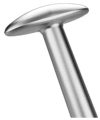Historical and Contemporary Debates in Schlemm's Canal-Based MIGS
- PMID: 39201024
- PMCID: PMC11355781
- DOI: 10.3390/jcm13164882
Historical and Contemporary Debates in Schlemm's Canal-Based MIGS
Abstract
Glaucoma is one of the primary causes of blindness worldwide. Canal opening surgery, a type of minimally invasive glaucoma surgery (MIGS) applied in cases of mild to moderate glaucoma, has gained increasing popularity in recent years due to its efficacy in reducing the intraocular pressure, its safety profile, the simplicity of its technique, and the reduced likelihood of compromised vision. Nevertheless, the existing body of histopathological studies remains insufficient for a comprehensive understanding of post-surgical wound healing. Consequently, debates persist among researchers regarding the mechanism through which Schlemm's canal opening surgery reduces the intraocular pressure, as well as the surgical techniques that may impact the outcomes and the factors influencing surgical success. As the history of MIGS is relatively short and lacks sufficient systemic reviews or meta-analyses evaluating the influence of individual factors, this review was conducted to illuminate the disparities in researchers' opinions at the current stage of research.
Keywords: Kahook dual blade; Schlemm’s canal opening surgery; T hook; Tanito micro-hook; canaloplasty; history; minimally invasive glaucoma surgery (MIGS); surgical success; trabectome; trabeculectomy; trabeculotomy.
Conflict of interest statement
The authors declare no conflicts of interest.
Figures




Similar articles
-
Visual Function After Schlemm's Canal-Based MIGS.J Clin Med. 2025 Apr 7;14(7):2531. doi: 10.3390/jcm14072531. J Clin Med. 2025. PMID: 40217980 Free PMC article. Review.
-
Minimally Invasive Glaucoma Surgery.2023 Aug 25. In: StatPearls [Internet]. Treasure Island (FL): StatPearls Publishing; 2025 Jan–. 2023 Aug 25. In: StatPearls [Internet]. Treasure Island (FL): StatPearls Publishing; 2025 Jan–. PMID: 35881761 Free Books & Documents.
-
Effectiveness and limitations of minimally invasive glaucoma surgery targeting Schlemm's canal.Jpn J Ophthalmol. 2021 Jan;65(1):6-22. doi: 10.1007/s10384-020-00781-w. Epub 2020 Nov 5. Jpn J Ophthalmol. 2021. PMID: 33150512 Review.
-
Minimally Invasive Glaucoma Surgery: A Review of the Literature.Vision (Basel). 2023 Aug 21;7(3):54. doi: 10.3390/vision7030054. Vision (Basel). 2023. PMID: 37606500 Free PMC article. Review.
-
Ab interno Schlemm's Canal Surgery.Dev Ophthalmol. 2017;59:127-146. doi: 10.1159/000458492. Epub 2017 Apr 25. Dev Ophthalmol. 2017. PMID: 28442693 Review.
Cited by
-
Diabetes Mellitus: A Risk Factor in Schlemm's Canal-Based Minimally Invasive Glaucoma Surgery.J Clin Med. 2024 Dec 16;13(24):7660. doi: 10.3390/jcm13247660. J Clin Med. 2024. PMID: 39768583 Free PMC article.
-
Visual Function After Schlemm's Canal-Based MIGS.J Clin Med. 2025 Apr 7;14(7):2531. doi: 10.3390/jcm14072531. J Clin Med. 2025. PMID: 40217980 Free PMC article. Review.
-
Comparison of Standalone Tanito Microhook Trabeculotomy Between Unilateral and Bilateral Incision Groups.J Clin Med. 2025 Mar 14;14(6):1976. doi: 10.3390/jcm14061976. J Clin Med. 2025. PMID: 40142786 Free PMC article.
References
-
- Kashiwagi K., Kogure S., Mabuchi F., Chiba T., Yamamoto T., Kuwayama Y., Araie M., The Collaborative Bleb-Related Infection Incidence and Treatment Study Group Change in visual acuity and associated risk factors after trabeculectomy with adjunctive mitomycin C. Acta Ophthalmol. 2016;94:e561–e570. doi: 10.1111/aos.13058. - DOI - PubMed
-
- Leber T. Studien ueber den flussigkeitswechsel im Auge. Graefes Arch. Clin. Exp. Ophthalmol. 1873;19:87–106. doi: 10.1007/BF01720618. - DOI
Publication types
LinkOut - more resources
Full Text Sources
Research Materials

